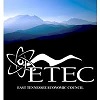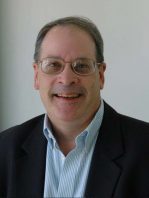
PART 1: Jim Campbell reflects on his early days in Oak Ridge and the challenges the community faced
 (EDITOR’S NOTE: This is the first article in a three-part series chronicling the professional life and observations of Jim Campbell, the long-time President of the East Tennessee Economic Council, who is retiring at the end of this month.)
(EDITOR’S NOTE: This is the first article in a three-part series chronicling the professional life and observations of Jim Campbell, the long-time President of the East Tennessee Economic Council, who is retiring at the end of this month.)
By Tom Ballard, Chief Alliance Officer, PYA
Jim Campbell could write a book, if not an encyclopedia, about the history of Oak Ridge, particularly the federal missions and programs. In fact, writing is one of the activities that he plans to do more of after he retires at the end of this month as President of the East Tennessee Economic Council (ETEC).
The former newspaper reporter and later editor of The Oak Ridger assumed his current role in 1995. We share three things in common . . . natives of Maryville, our respective newspaper backgrounds, and a strong appreciation of the uniqueness that is ETEC, an organization that meets almost every Friday morning at 7:30 a.m. and attracts 75 to 200 people each week.
Campbell graduated from Maryville College with a B.A. in History and then earned an M.A. in History from the University of Oregon. That passion for history, coupled with the naturally inquisitive nature of a journalist, have served him well.
In a wide-ranging interview last month, we talked about the history of ETEC, and the roller coaster ride that Oak Ridge experienced after the Cold War ended. Today, as he prepares to turn over the organization to current ETEC Vice President Tracy Boatner, Campbell sees nothing but great opportunities for Oak Ridge going forward.

“This community is well-positioned to compete for new missions,” he says. That optimistic view was far different in the early and mid-1970s, particularly as a result of organizational changes first advocated by President Richard Nixon and implemented under President Gerald Ford when Congress passed the “Energy Reorganization Act of 1974.” The act abolished the Atomic Energy Commission (AEC) and created three new federal entities: Energy Research and Development Administration (ERDA), Nuclear Regulatory Commission (NRC), and an Energy Resources Council.
“The world got turned upside down,” Campbell said. “People in this town were almost wholly dependent on AEC for their livelihood,” and AEC went away with the nuclear programs going to the NRC and the balance assigned to ERDA.
As described on the ETEC webpage, the increasing stress on the federal programs in Oak Ridge caused community leaders to join forces to form the Roane Anderson Economic Council (R-AEC), the organization that is now known as ETEC. The effort was led by well-known and respected individuals like Eugene Joyce, Tom Hill, and Don Maxwell who established the new organization as a forum for federal officials and their contractors to discuss and prioritize programs. R-AEC’s purpose was “to promote regional development of the two-county area, to explore broad opportunities for growth, particularly in the multi-billion dollar field of energy technology . . . It is also concerned with informed political representation at the state and federal levels and the need for unified action toward common political goals.”
Campbell described something called the “West Coast Swing” that Maxwell, who headed the Bank of Oak Ridge, conceived. It was an industrial recruitment trip with the first stop being San Diego where SAIC was located. “The company only had 23 employees at the time, but Don talked with the company about coming to Oak Ridge,” he said.
Other stops included General Atomics, also in San Diego; Bechtel in San Francisco; and Boeing in Seattle. Eventually, every company that was visited expanded into Oak Ridge except General Atomics.
“The seeds were all planted on this trip in 1978,” Campbell said, explaining that there is an important lesson to be learned. “Relationships don’t produce results immediately. They (Maxwell and others) built the bones of what we are doing today.”
Yet, even as efforts were underway to diversify the economy and make it less dependent on the federal side, there were a number of developments that presented significant challenges for the community known as the Secret City.
NEXT: Federal decisions impact Oak Ridge.
Like what you've read?
Forward to a friend!

